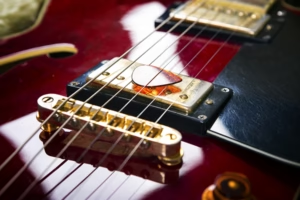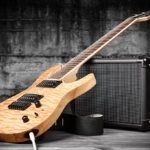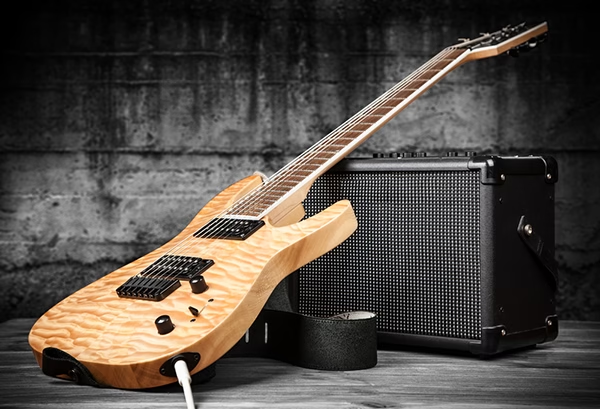
1. The Legendary Legacy of Gibson Acoustic Guitars
Few names command as much respect in the world of music as Gibson Acoustic Guitars. Since their debut in the early 1900s, these handcrafted instruments have defined the sound of Americana, folk, country, and rock. Whether it’s the warm strum of a Gibson J-45 or the intricate resonance of a Hummingbird, each guitar tells a story through tone, craftsmanship, and soul.
Musicians and collectors alike revere Gibson for its commitment to quality materials, meticulous handcrafting in Bozeman, Montana, and an unparalleled tonal balance that bridges clarity and warmth. From the mahogany-rich mids of the J-50 to the spruce sparkle of the Songwriter Deluxe, Gibson acoustic guitars are more than instruments—they’re emotional conduits that shape iconic performances.
2. The Birth of an American Sound
The story of Gibson Acoustic Guitars begins in Kalamazoo, Michigan, in 1902, when Orville Gibson founded a company dedicated to pushing lutherie into the modern age. Gibson’s innovation—the carved archtop guitar—set the stage for the brand’s later dominance in flat-tops. By the 1930s, models like the L-00 and Jumbo series introduced the world to a tone that combined projection, warmth, and playability.
The pre-war era saw Gibson’s acoustics evolve rapidly, establishing benchmarks in tonewood pairing, bracing architecture, and body design that modern builders still emulate. This golden age cemented Gibson’s position as one of the defining voices of 20th-century music.
3. The Iconic J-45: The Workhorse of Songwriters
Known affectionately as “The Workhorse,” the Gibson J-45 stands at the heart of the company’s acoustic lineup. Introduced in 1942, it became synonymous with rich midrange warmth and an unmistakable balanced tone. Artists from Bob Dylan to James Taylor and Bruce Springsteen have wielded it onstage and in the studio.
What makes the J-45 special? Its round-shoulder dreadnought shape, sitka spruce top, and mahogany back and sides produce a full, earthy voice that sits perfectly in a mix. It’s the gold standard for singer-songwriters seeking authenticity and depth in every strum.
4. The Hummingbird: Where Beauty Meets Brilliance
Launched in 1960, the Gibson Hummingbird became a symbol of visual and sonic artistry. With its square-shoulder body, intricate engraved pickguard, and sunburst finish, it’s arguably one of the most recognizable acoustic guitars in the world.
But beyond its looks lies an equally enchanting sound—crisp highs, robust lows, and a shimmering sustain that make it perfect for both rhythm and lead work. Played by icons like Keith Richards and Sheryl Crow, the Hummingbird is an emotional masterpiece that blends vintage aesthetics with modern playability.
5. The SJ-200: The King of the Flat-Tops
If there’s one Gibson acoustic that epitomizes grandeur, it’s the SJ-200, often called the King of the Flat-Tops. Designed in 1937 for Hollywood’s singing cowboys, this jumbo acoustic features maple back and sides, moustache bridge, and a 17-inch body that commands both attention and stage presence.
From Elvis Presley to Emmylou Harris, the SJ-200’s bold projection and shimmering overtones have made it a staple of live performance. It’s the perfect blend of power, beauty, and nuance—a guitar that doesn’t just sing, it roars.
6. The Songwriter and the Modern Gibson Line
While the vintage classics steal the spotlight, modern Gibson Acoustic Guitars such as the Songwriter, G-45 Studio, and Generation G-00 carry the brand’s legacy into the future. These instruments combine cutting-edge bracing, player-centric neck profiles, and advanced electronics for today’s stage and studio environments.
The Songwriter Deluxe Studio, in particular, merges the traditional Gibson tonal DNA with contemporary clarity—ideal for recording artists and touring musicians who demand consistency and precision.
7. Craftsmanship, Tonewoods, and Technology
Every Gibson acoustic guitar is a testament to craftsmanship. Built in Bozeman, Montana, the process involves over 50 pairs of expert hands. Each instrument undergoes careful selection of tonewoods—spruce for resonance, mahogany for warmth, rosewood for definition, and maple for brightness.
Modern Gibson models also feature hand-scalloped X-bracing, Plek-machine precision fretwork, and L.R. Baggs electronics, ensuring the same acoustic depth translates perfectly when amplified. This marriage of heritage and innovation ensures that Gibson Acoustic Guitars remain relevant in a digital recording age.
8. Why Musicians Still Choose Gibson Acoustic Guitars
From small clubs to global tours, Gibson Acoustics continues to define the emotional core of live performance. Artists often cite the brand’s dynamic response, intonation stability, and unmatched resonance as reasons they gravitate toward Gibson.
The tactile feel—the way a J-45 neck molds into the hand or the responsive touch of a Hummingbird—creates a deep, almost spiritual connection between player and instrument. In the realm of professional acoustics, Gibson remains a benchmark for authentic tone and emotional storytelling.
9. Vintage Value and Collector Appeal
Vintage Gibson Acoustic Guitars have become prized investments, with pre-war J-35s and early Hummingbirds fetching impressive sums at auctions. Collectors value these instruments not just for rarity, but for the maturity of tone that only decades of aging wood can provide.
As sustainability and wood sourcing become more important, Gibson’s commitment to responsibly harvested tonewoods and its Custom Shop reissues ensures that players can still experience the magic of classic Gibson models—ethically and authentically.
10. The Emotional Resonance of a Gibson
Perhaps the greatest strength of Gibson Acoustic Guitars lies in their emotional resonance. Whether you’re a professional artist or a bedroom musician, there’s something profoundly human about the sound they produce. Each note rings with heritage, heart, and history.
From Appalachian folk to stadium rock, from the first strum to the final encore, Gibson acoustics have been the soundtrack of our collective musical journey. And in an age of digital perfection, their handcrafted imperfection is what makes them truly timeless.







